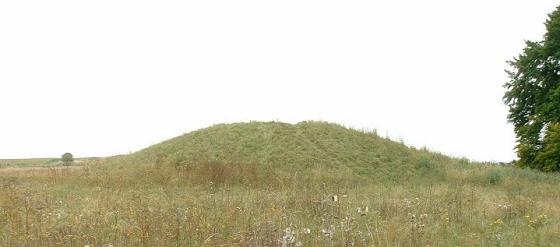Details of the central section of the Barrow Group on Pastscape
14 Bronze Age round barrows on Normanton Down survive as earthworks. They form the central group of the Normanton Down round barrow cemetery (Monument Number 1531088). The round barrows were listed individually by Goddard (1913) and Grinsell (1957), as: Wilsford 3-9, 9a, 10-12 and 14-17. The group includes Bush Barrow (Monument Number 943060). The linear barrow cemetery continues to the west (Monument Number 219735) and east (Monument Number 219564). Many of the round barrows were excavated by Sir Richard Colt Hoare in the early 19th century and they were surveyed at a scale of 1:1000 in April 2010 as part of English Heritage’s Stonehenge WHS Landscape Project. Please see the individual records for specific details about each barrow.



















































































































